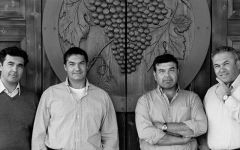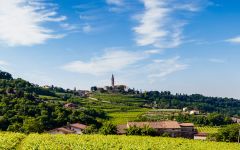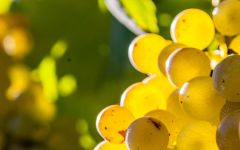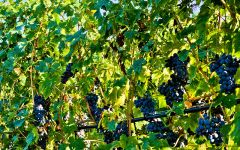Scaia Bianco 2023
-
Wine
Enthusiast



Product Details
Your Rating
Somm Note
Winemaker Notes
White flowers of acacia, jasmine, bouquet of citrus such as pineapple, grapefruit and orange, apple, pear and mango and a light note of bananas. Fresh and pleasant thanks to its sustained acidity.
Enjoy it as an aperitif, or with hors d'oeuvres featuring fish or seasonal vegetables and cold dishes, first courses with herbs, vegetable risottos, dry pasta dishes and soups, fish in light sauces.
Blend: 55% Garganega, 45% Chardonnay
Professional Ratings
-
Wine Enthusiast
Aromas of pineapple, guava and ripe lemons lift from the glass as hints of jasmine waft by. Rounded with a texture that keeps the palate engaged as flavors of white peach and tart mango lead to a mineral-focused finish that pops. Dalla Terra Winery Direct.





In the 1980s, four brothers—Armando, Tiziano, Paolo, and Massimo Castagnedi—began making their first moves toward opening their own winery. They had inherited 50 acres of vineyards in the eastern section of Valpolicella from their father, and in 1989 they purchased 75 more acres in the same general area, releasing their first vintage under the Tenuta Sant'Antonio label in 1995. In 2006 they began a new project under the Scaia label to further explore the potential of the traditional varieties they were growing.
In naming this new brand Scaia, they referenced the type of soil they had in their vineyards—a chalky, granular soil that broke apart easily. Scaia is a word in Veronese dialect for crumbs, like little pieces of Parmigiano Reggiano cheese that fall off a large block, which the soil resembles. Scaia soil imparts a higher acidity and bolder fruit character to the wines.
The Scaia brand became an avenue for innovation, where they could experiment with new interpretations of the great traditions of Valpolicella and Veneto—for example, atypical blends of traditional grape varieties, or varietal wines from grapes that are usually blended. The resulting wines—white, red, and rosato—are strongly rooted in the region’s winemaking traditions, but with a fresh twist and at an affordable price.

With hundreds of white grape varieties to choose from, winemakers have the freedom to create a virtually endless assortment of blended white wines. In many European regions, strict laws are in place determining the set of varieties that may be used in white wine blends, but in the New World, experimentation is permitted and encouraged. Blending can be utilized to enhance balance or create complexity, lending different layers of flavors and aromas. For example, a variety that creates a soft and full-bodied white wine blend, like Chardonnay, would do well combined with one that is more fragrant and naturally high in acidity. Sometimes small amounts of a particular variety are added to boost color or aromatics. Blending can take place before or after fermentation, with the latter, more popular option giving more control to the winemaker over the final qualities of the wine.

Producing every style of wine and with great success, the Veneto is one of the most multi-faceted wine regions of Italy.
Veneto's appellation called Valpolicella (meaning “valley of cellars” in Italian) is a series of north to south valleys and is the source of the region’s best red wine with the same name. Valpolicella—the wine—is juicy, spicy, tart and packed full of red cherry flavors. Corvina makes up the backbone of the blend with Rondinella, Molinara, Croatina and others playing supporting roles. Amarone, a dry red, and Recioto, a sweet wine, follow the same blending patterns but are made from grapes left to dry for a few months before pressing. The drying process results in intense, full-bodied, heady and often, quite cerebral wines.
Soave, based on the indigenous Garganega grape, is the famous white here—made ultra popular in the 1970s at a time when quantity was more important than quality. Today one can find great values on whites from Soave, making it a perfect choice as an everyday sipper! But the more recent local, increased focus on low yields and high quality winemaking in the original Soave zone, now called Soave Classico, gives the real gems of the area. A fine Soave Classico will exhibit a round palate full of flavors such as ripe pear, yellow peach, melon or orange zest and have smoky and floral aromas and a sapid, fresh, mineral-driven finish.
Much of Italy’s Pinot grigio hails from the Veneto, where the crisp and refreshing style is easy to maintain; the ultra-popular sparkling wine, Prosecco, comes from here as well.
